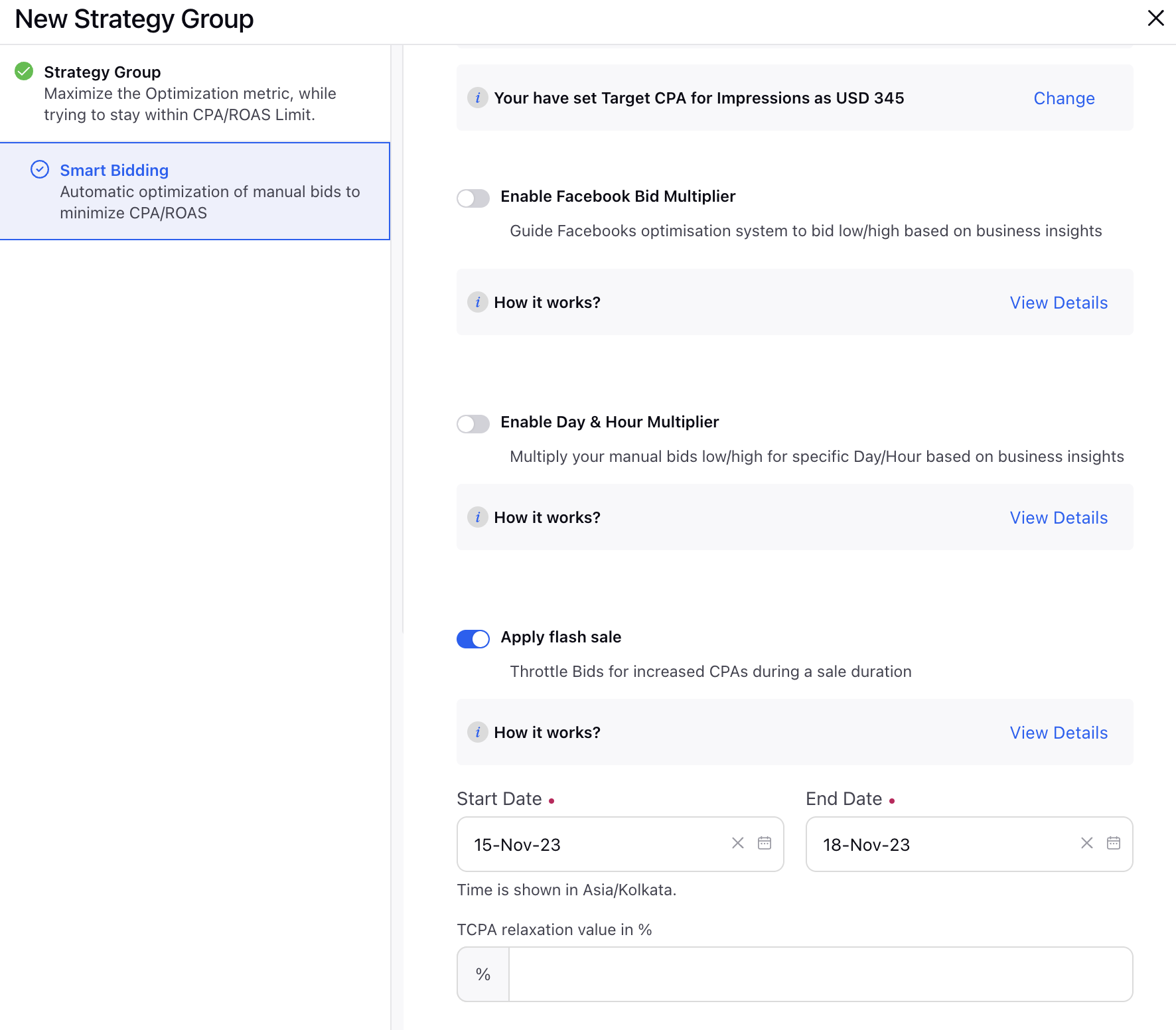About Flash Sale Bidding
Updated
Businesses that engage in social media advertising often find themselves navigating through annual sales events during peak seasons. These high-stakes periods are marked by distinctive characteristics:
Intense Competition: The landscape becomes fiercely competitive, with numerous advertisers vying for the attention of the same target audience.
Escalating Costs: The heightened competition inevitably leads to increased advertising costs, as businesses engage in bidding wars to secure prime ad placements.
Budget Surge: Advertisers frequently witness a surge in their budgets, sometimes reaching 2-5 times the usual amount, as they strive to outshine competitors and capture consumer interest.
Dynamic Budget Adjustments: Rapid and frequent changes to advertising budgets become the norm during these peak periods. Advertisers often shift resources on the fly, redistributing budgets from underperforming campaigns to those yielding better results.
This cycle is an annual ritual, with a meticulous focus on tweaking campaigns to optimize performance during key retail events. For instance, an electronics re-seller might gear up for Black Friday, a gifting brand for Valentine's Day, or a jewelry retailer for Dhanteras. As the sales period unfolds, advertisers shift their focus toward ensuring the entire budget is delivered, even if it means momentarily accepting higher costs to achieve their campaign objectives.
This scenario gives rise to several operational challenges that advertisers must grapple with during these peak sales periods:
CPA Adjustments: Advertisers find themselves compelled to manually update or relax the target Cost Per Acquisition (CPA) for all ongoing campaigns. Following the conclusion of the sale period, a meticulous recalibration of CPAs is necessary, requiring a systematic application across various strategy groups.
Strategy Breaks: The demand for strategic adjustments prompts advertisers to interrupt or pause their Smart Bidding (SB) strategies during the sales period.
Bid Manualization: As budgets swell during peak periods, advertisers are forced into the realm of manual bid adjustments. This involves a hands-on approach to modifying bids to accommodate the increased budget, ensuring that each bid aligns with the revised financial parameters.
In essence, the dynamic nature of these peak sales periods demands a hands-on approach from advertisers, involving manual interventions to fine-tune various aspects of their advertising strategies. From recalibrating CPAs to orchestrating strategic pauses and resumptions, and making bid adjustments to align with budgetary shifts, advertisers navigate a complex landscape to optimize their campaigns during and after these high-stakes events.
Configuration
This feature is DP enabled.
DP : PAID_FLASH_SALE_BIDDING_ENABLED
To configure this feature:
In Sprinklr Marketing, go to Advertising section.
Navigate to Strategy Group from the Launchpad.
Click “Create a Strategy Group”, with Smart Bidding as an optimisation.
In the Smart Bidding Pane, click and toggle on “Apply Flash Sale”.
Enter the start and end date.

If you want to apply Flash Sale with target CPA, apply target CPA at strategy group tab.
If Flash sale with T-CPA is applied on a campaign, then the entity will be optimised towards costs, whereas when applied without T-CPA, entity will be optimised on pacing levels.
Best Practices
Budget change should not be more than 50% of the current budget.
Limited manual interventions (avoid changing creative, and audience)
Limitations
No bid in learning phase: During the learning phase of the entity, Flash sale bidding does not implement bids.
Major Budget Change: Flash sale doesn't perform optimally when budget change is more than 50% of the current budget.
Details for Learning phase: https://www.facebook.com/business/help/112167992830700?id=561906377587030